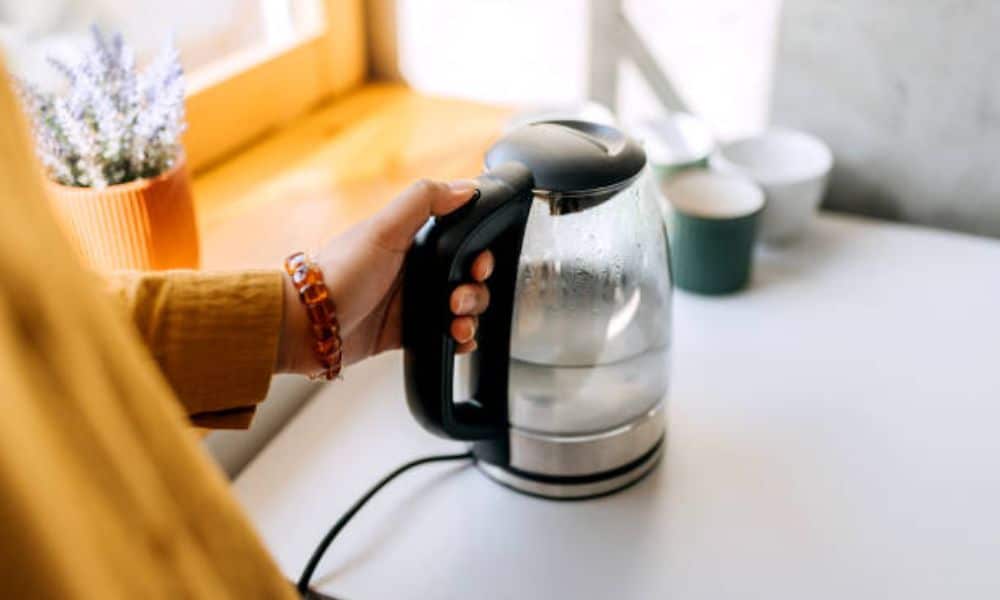I still remember pouring a fresh cup of tea one morning. The taste was strange. Not terrible—but not right either. I looked inside my electric kettle and saw the problem. A chalky white film had built up on the bottom and sides. Limescale. My shiny kettle had lost its sparkle. That small surprise started my journey to learn how to clean a water kettle the right way. Since then, I’ve tried many methods. Some worked. Some didn’t. Now, I follow a simple routine that keeps my kettle fresh and clean. Whether you use yours every day or once a week, this guide will help.
Why Cleaning Your Kettle Matters
A clean kettle does more than look nice. It keeps your drinks fresh, Helps water boil faster, And can even extend your kettle’s life. Over time, Minerals from tap water—especially in hard water areas—start to build up. This buildup, known As limescale, Slows performance And can flake into your drink. If you care about safe And healthy brewing, Check out the Best Non Toxic Electric Tea Kettle for a cleaner experience from the start.
Luckily, with a little care and A few kitchen staples, Keeping clean is easy.
My Tried-and-True Method: Step-by-Step Cleaning
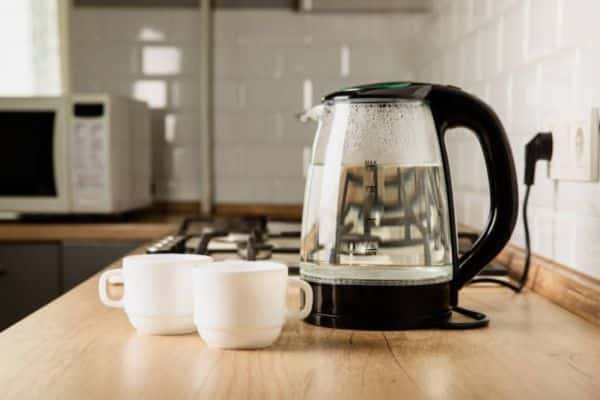
Let’s break it down into a simple, No-fuss routine. You can use this for electric Or stovetop kettles—just make sure yours doesn’t have special coating Or cleaning restrictions in the manual.
Step 1: Empty and Rinse
Start by emptying the kettle. If there’s old water sitting inside, Pour it out. Give the pot A quick rinse with clean water To remove any loose particles.
Pro tip: If there are any loose flakes Of limescale already, Swish the water gently To loosen them.
Step 2: Add Your Cleaning Solution
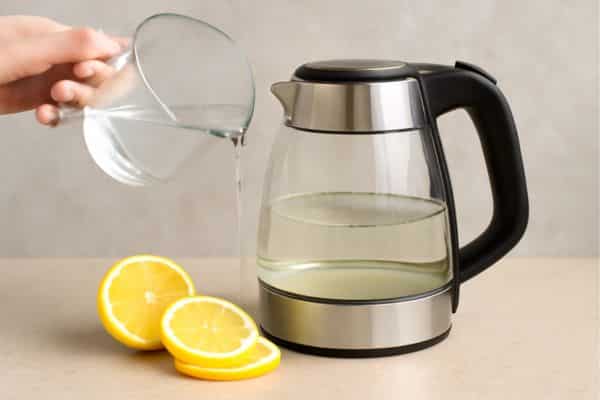
Now, We bring out the magic ingredients—white vinegar Or lemon juice.
For vinegar:
- Mix equal parts water And white vinegar (1:1).
- Fill the kettle halfway or enough to cover the affected areas.
For lemon juice:
- Use fresh lemon juice Or bottled, About 2–3 tablespoons.
- Add water to fill halfway.
Both work well. I switch depending on what’s in my kitchen. Vinegar is stronger; Lemon smells nicer.
Step 3: Boil and Soak
Turn on And let the solution come to A full boil. Once it boils, turn off the kettle And let it sit for At least 30 minutes. For heavier buildup, I wait up to an hour.
During this soak, The acid breaks down the minerals inside. You’ll often see little bubbles rising or white flakes floating around—that’s the limescale softening.
Step 4: Scrub Gently (If Needed)
After soaking, check the inside. If you still see buildup, Use a soft sponge or An old toothbrush to scrub the spots. Avoid steel wool Or anything rough—they can scratch the metal.
Focus on the bottom And near the spout, Where buildup hides.
Step 5: Rinse Thoroughly
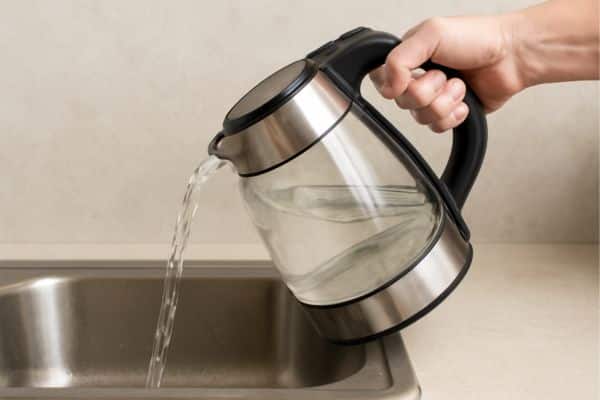
Now dump out the cleaning mix. Rinse the kettle three To four times with clean water. If it still smells like vinegar or lemon, Fill it again with water, Boil it, And rinse one more time.
No one wants vinegar-flavored tea!
Step 6: Dry It Out
Wipe the outside with A damp cloth and dry it with A towel. Leave the lid open for A few hours To let the inside air dry completely.
My Weekly Quick-Clean Routine
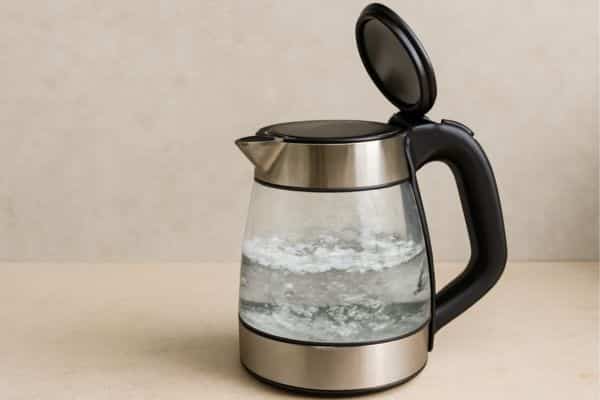
If you use daily, like I do, A deep clean once a month is great. But a quick weekly clean keeps it fresher longer:
- Fill it with clean water.
- Boil it and let it sit for 10 minutes.
- Empty and wipe it with a soft cloth.
- Leave the lid open to dry.
This simple habit helps prevent thick limescale from forming in the first place.
What About the Outside?
The inside’s not the only place that needs love. Here’s how I clean the exterior without damage:
- Stainless Steel: A bit of vinegar on A microfiber cloth shines them up.
- Plastic: Mild dish soap and water, using a soft sponge.
- Glass: Vinegar works here too—just don’t soak the electric base.
Avoid getting the electrical parts wet. Always unplug before cleaning.
Natural Alternatives I’ve Tried
Not a fan of vinegar? Here are a few other methods I’ve used that work well:
- Baking Soda: Add a tablespoon to water, Boil, soak, And rinse.
- Citric Acid: A food-safe option that works like lemon juice. Great for heavy limescale.
- Coca-Cola: Sounds strange, but yes—it works in a pinch. The acid in Coke breaks down scale too. Just rinse very well!
I still prefer vinegar or lemon, But it’s fun to know there are backups in the pantry.
How Often Should You Clean?
Here’s my personal schedule:
- Weekly: Quick rinse and dry.
- Monthly: Deep clean with vinegar or lemon.
- Every 3-6 Months: If you have hard water, do an extra clean using citric acid or baking soda.
If starts heating slowly or tea tastes odd, it’s time to clean.
Signs Your Kettle Needs Cleaning
Keep an eye out for these clues:
- Chalky white spots inside
- Strange taste in tea or coffee
- Slower boiling
- Noise during heating
- Visible flakes in water
Don’t ignore them! A little attention saves you from bigger problems later.
A Few More Tips From My Kitchen
- Use filtered water if you have hard tap water. It cuts down on limescale.
- Never leave water sitting overnight. Empty the kettle after each use.
- Keep the lid open when it’s not in use. Airflow prevents mould or musty smells.
- Check the spout filter (if your kettle has one). They can trap debri,s too.
Final Thoughts
Cleaning your kettle is easier than it seems. It takes only a few minutes but makes a big difference. The first time I did it right, my tea tasted fresh again. The water boiled faster. My kettle looked as good as new.
This small task keeps your kitchen running smoothly. It also helps it last longer. A little care goes a long way.
So treat to a quick clean. Your tea, your coffee, and your taste buds will be glad you did.

